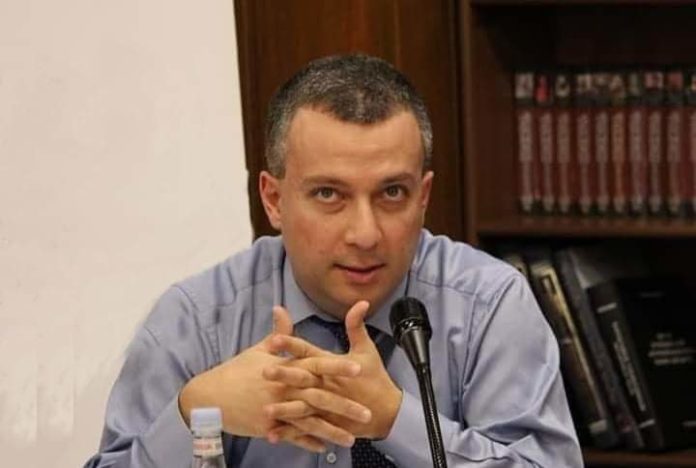By Dr. Benyamin Poghosyan published in The Armenian Mirror of Spectator
From September 2020 to September 2023, Azerbaijan surprised many outside Armenia by taking control of the self-proclaimed Nagorno-Karabakh Republic, first during the 2020 Nagorno-Karabakh War and later in a military operation in September 2023. The “liberation of Karabakh” was a cornerstone of Azerbaijan’s domestic and foreign policy throughout the post-Soviet period, and resolving the conflict on Azerbaijan’s terms became a national priority for Baku. After September 2023, Azerbaijan faces a new challenge: to formulate a new national idea to gather the subjects around the ruling elite, as articulated by President Ilham Aliyev during his campaign ahead of the February 2024 snap presidential elections.
Two directions of new foreign policy supporting the “new national idea” are emerging. The first pillar is the development of relations with the Turkic world, portrayed as “the gateway to Central Asia.” This includes growing relations with Turkey and the Central Asian Turkic countries. In recent years, Azerbaijan has significantly increased its interactions with Central Asian republics, including high-level visits and enhanced economic cooperation. The Middle Corridor, a route that could connect China to Europe via Kazakhstan and Azerbaijan, is one of the economic projects jointly promoted by Azerbaijan and Central Asian republics. Azerbaijan has also emphasized the importance of the Organization of Turkic States. President Aliyev has underscored Azerbaijan’s commitment to strengthening relations with Turkic states as a key foreign policy priority, notably during the meeting with parliamentary officials from Turkey, Kazakhstan, Uzbekistan, Kyrgyzstan, the Turkish Republic of Northern Cyprus (TRNC), and Hungary.
In the same speech Aliyev emphasized that the Turkic world has great power, with its vast geography and potential — encompassing transportation routes, energy resources, human capital, and a growing population and called for unified efforts to transform this potential into a global influence. These themes were reiterated during the informal summit of the heads of state of the Organization of Turkic States, held in Azerbaijan in July 2024.
Azerbaijan is taking steps to connect Central Asia with the South Caucasus, potentially establishing a wider Caucasus–Caspian region and offering a new integration model as an alternative to those proposed by the European Union and Russia. Additionally, Azerbaijan has increased its cooperation with the Global South, establishing a strategic partnership with China and officially applying to join BRICS (the intergovernmental organization comprising Brazil, Russia, India, China, South Africa, Iran, Egypt, Ethiopia and the United Arab Emirates).
The second pillar of Azerbaijan’s new foreign policy strategy is the development of the concept of “Western Azerbaijan,” which claims significant parts of the Armenian territory as historical Azerbaijani lands. The concept serves two primary goals. First, it maintains Armenia and Armenians as the external enemies of Azerbaijani society, rallying the population around President Aliyev’s rule. For the past 20 years, the promise to “liberate Karabakh” was the primary tool used to consolidate support for Aliyev and to divert attention from systemic problems in Azerbaijan, such as unequal distribution of oil and gas wealth, rampant corruption, the lack of political and individual freedoms, and constant human rights violations committed by the regime.
However, after the military takeover of Nagorno-Karabakh in September 2023, this issue ceased to exist, and the concept of “Western Azerbaijan” may replace it as a new rallying point, requiring consolidation around the ruling dynasty. Domestic political considerations are not the only motivation behind this concept. The second goal is geopolitical: to create a “justification” for future attacks against Armenia.
These two visions intersect in the creation of a united Turkic world and the concept of Western Azerbaijan. Azerbaijani leaders frequently claim that the Soviet government severed Armenia’s Syunik region, which they refer to as “Zangezur,” from Azerbaijan and handed it to Armenia in 1920. Thus, a potential attack on Syunik in 2025 could be justified as a step toward uniting the Turkic world and establishing “Western Azerbaijan.”
The two directions of Azerbaijan’s new foreign policy strategy do not envisage peace with Armenia. This explains Azerbaijan’s tactics in the peace negotiations with Yerevan to make statements signaling progress while undermining it with insurmountable preconditions. Azerbaijan’s leadership needs Armenia as an adversary for domestic and foreign policy reasons. Both directions can also justify new acts of aggression against Armenia.
In current circumstances, while continuing its efforts to sign a peace agreement with Azerbaijan, the Armenian government should send a clear message to its international partners about the growing likelihood of new Azerbaijani attacks against Armenia after the 2024 United Nations Climate Change Conference (COP29), and negative implications not only for Armenia but for the entire region, including jeopardizing the region’s potential to become a transport hub. As military balance continues to be in favor of Azerbaijan, despite recent armament purchase deals by Armenia, the Armenian government should realistically assess the capacities and willingness of its different foreign partners to deter new Azerbaijani aggression and make its foreign policy decisions based on those calculations.












